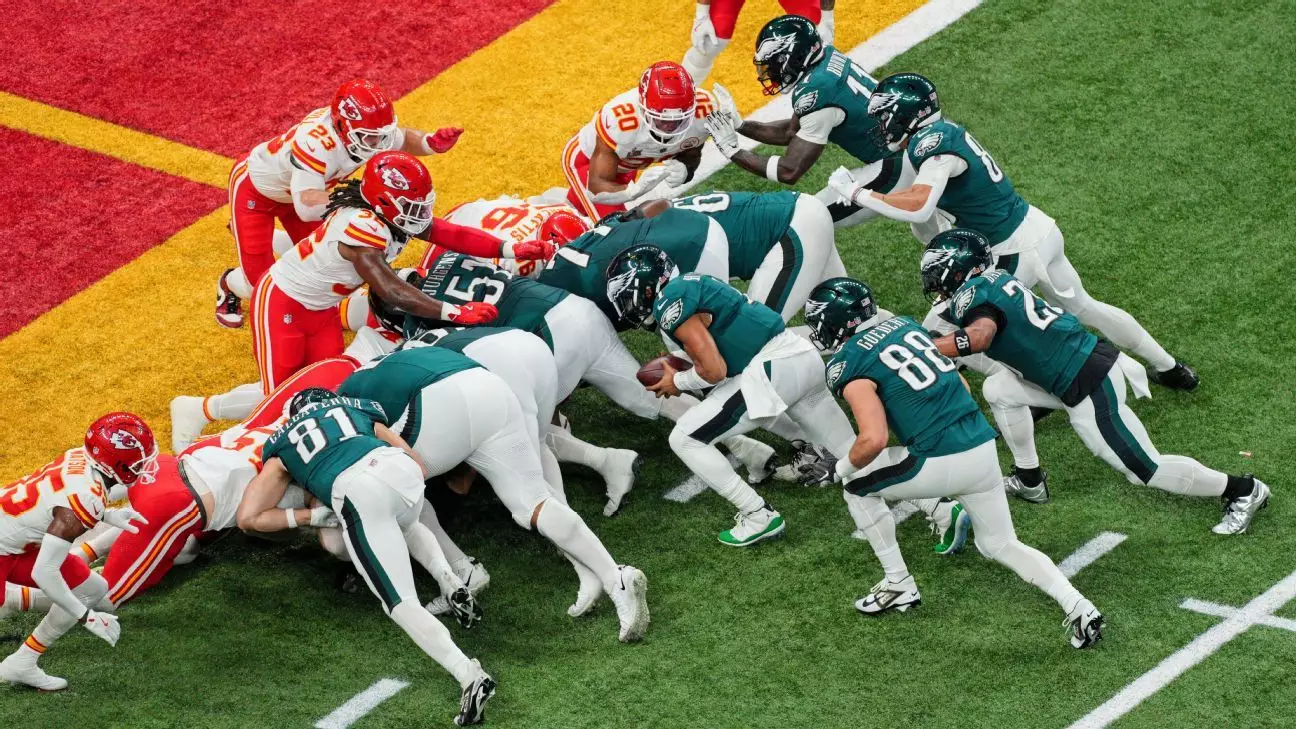The ongoing dynamics of the National Football League (NFL) frequently bring to light contentious debates regarding the rules that shape the game. One of the recent hot topics is the proposal submitted by an unnamed NFL team to ban the infamous “tush push” quarterback sneak, a rule that could have far-reaching implications for team strategies and player safety. This article delves into the nuances of this proposal, the success rate of the play, historical context, and the broader implications for the league.
The “tush push” refers to a specific quarterback sneak scenario where additional players line up behind the quarterback to propel him forward against the defensive line. This method has gained popularity due to its effectiveness, particularly among certain teams, most notably the Philadelphia Eagles. According to recent data, the Eagles and Buffalo Bills have executed 163 “tush push” plays over the past three seasons, enjoying an astounding success rate of 87%. In contrast, the rest of the NFL teams collectively achieved only 71% success. This disparity raises questions about fairness and competitive balance within the league, offering fertile ground for potential rule changes.
During a recent press briefing at the NFL scouting combine, Troy Vincent, the league’s executive vice president of football operations, revealed plans to address the “tush push” during an upcoming meeting with the competition committee. While he did not disclose the team behind the proposal, he emphasized the need for adjustments to ensure the play remains a legitimate tactic in football. The proposal has sparked discussion regarding the play’s potential risks and the overall safety of players, adding to the complexity of the issue.
The concerns surrounding the “tush push” are not entirely new. In past seasons, the league’s officials have evaluated various aspects of the play, but no decisive action emerged at that time. Vincent indicated that discussions regarding the “tush push” have occurred intermittently, and although they momentarily shifted focus toward another controversial aspect of the game—the hip-drop tackle—intensified scrutiny of the “tush push” seems inevitable.
Should the proposal reach a vote during the spring owners’ meeting in Palm Beach, Florida, it requires a significant majority: at least 24 out of 32 owners must agree for it to pass. The potential ban could disrupt the strategic approaches of teams, particularly the Eagles, who have become synonymous with the tactic. Coach Nick Sirianni has already expressed his opposition to the proposed rule change, arguing that the Eagles’ unique success with the play should not warrant alteration of the rules.
The divide in perspectives on the play indicates a broader tension in the league. On one side lies the argument for preserving traditional football strategies, while on the other is the pressing need for player safety and fairness. Teams who struggle with the execution of the “tush push” may welcome a change, which could level the playing field, while successful teams naturally stand to lose an advantageous strategy.
As the NFL continues to evolve, the proposal to ban the “tush push” encapsulates the ongoing dialogue about the safety, fairness, and integrity of the game. While some view the play as a strategic evolution in terms of offensive tactics, others see it as a potential pathway to increased risk of injury and an unlevel playing field. As the NFL prepares for the potential vote on this hot-button issue, one thing is clear: the outcome will reverberate throughout the league, impacting team strategies and shaping the sport for years to come. Ultimately, how the league navigates this controversy will reflect its commitment to balancing innovation with the traditional values that underpin the game of football.


Leave a Reply